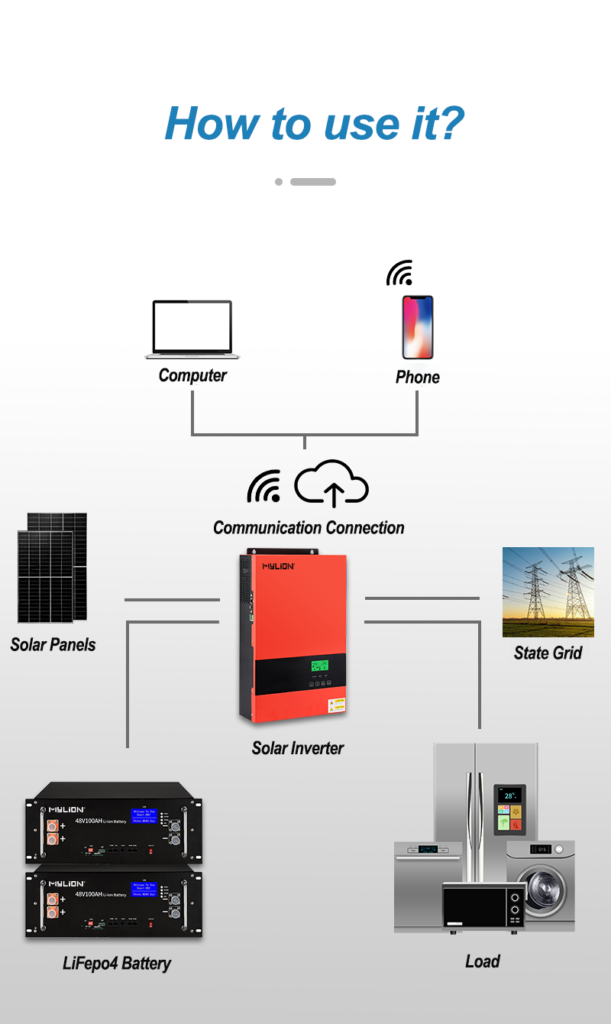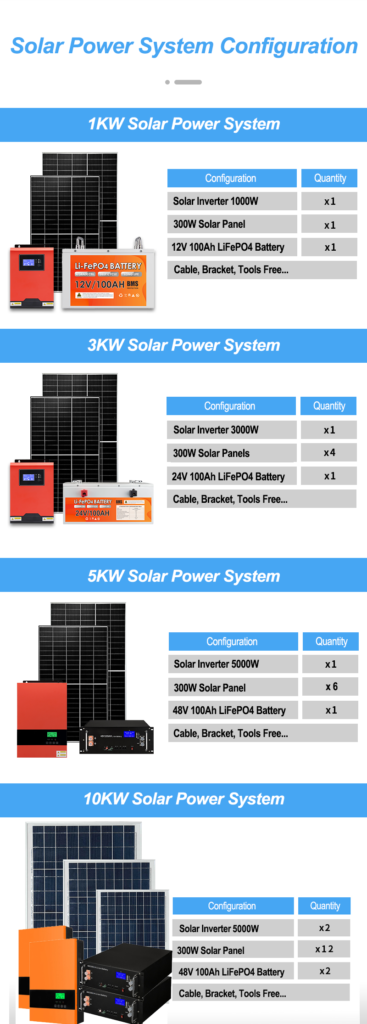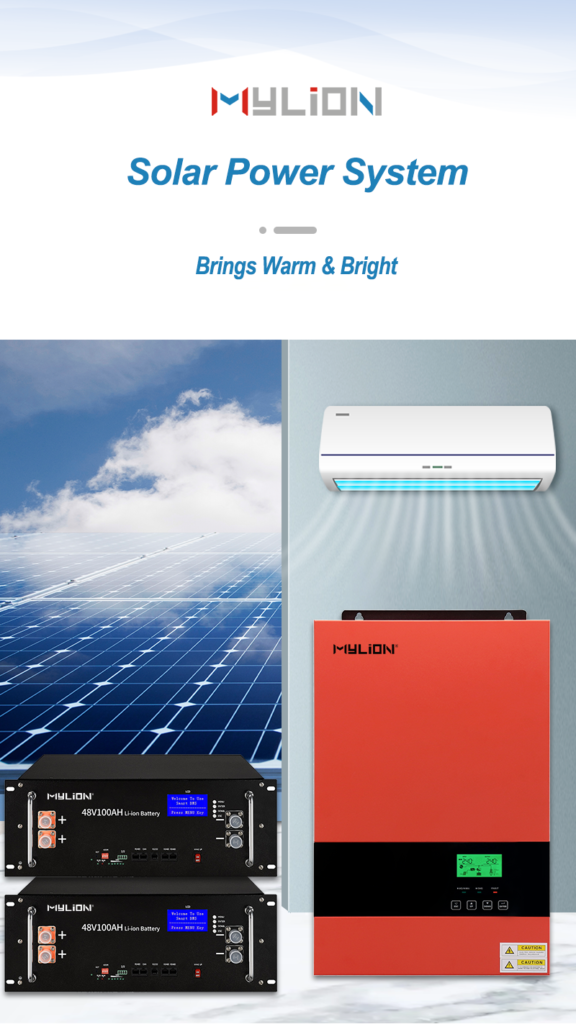Solar photovoltaic power generation is a technology that directly converts light energy into electrical energy by utilizing the photovoltaic effect of the semiconductor interface. The key element of this technology is the solar cell. After the solar cells are connected in series, they can be packaged and protected to form a large-area solar cell module, and then combined with power controllers and other components to form a photovoltaic power generation device.
The advantage of solar photovoltaic power generation is that it is less restricted by geographical areas, because the sun shines on the earth; the photovoltaic system also has the advantages of safety and reliability, no noise, low pollution, no need to consume fuel and erect transmission lines, and can generate electricity and power locally, and the construction period is short.

1. Classification of solar photovoltaic power generation systems
Solar photovoltaic systems are divided into off-grid photovoltaic power generation systems, grid-connected photovoltaic power generation systems and distributed photovoltaic power generation systems:
① Off-grid photovoltaic power generation system. It is mainly composed of solar cell components, controllers, and batteries. To supply power to the AC load, an AC inverter needs to be configured.
② The grid-connected photovoltaic power generation system is that the DC power generated by the solar modules is converted into AC power that meets the requirements of the mains grid through the grid-connected inverter, and then directly connected to the public grid. The grid-connected power generation system has centralized large-scale grid-connected power stations, which are generally national-level power stations. However, this kind of power station has not developed much due to its large investment, long construction period and large area. The decentralized small grid-connected power generation system, especially the photovoltaic building-integrated power generation system, is the mainstream of grid-connected power generation due to its advantages of small investment, fast construction, small footprint, and strong policy support.
③ Distributed photovoltaic power generation system, also known as distributed power generation or distributed energy supply, refers to the configuration of a smaller photovoltaic power generation power supply system at the user site or near the power site to meet the needs of specific users and support the existing distribution network. economic operation, or meet the requirements of both aspects at the same time.

2.The composition of the solar photovoltaic system
① Solar panel: The solar panel is the core part of the solar photovoltaic system. The function of the solar panel is to convert the light energy of the sun into electrical energy, and then output the direct current and store it in the battery. The solar panel is one of the most important components in the solar photovoltaic system, and its conversion rate and service life are important factors that determine whether the solar cell has use value.
② Controller: The solar controller is composed of a dedicated processor CPU, electronic components, displays, switching power tubes, etc.
③ Battery: The function of the battery is to store the electrical energy emitted by the solar panel when there is light, and release it when needed.
③Inverter: The direct output of solar energy is generally 12VDC, 24VDC, 48VDC. In order to provide power to 220VAC electrical appliances, it is necessary to convert the DC power generated by the solar photovoltaic system into AC power, so a DC-AC inverter is required.
3. Working principle of solar photovoltaic system
During the day, under the condition of illumination, the solar cell components generate a certain electromotive force, and the solar cell square array is formed through the series and parallel connection of the components, so that the square array voltage can meet the requirements of the system input voltage. Then, the battery is charged through the charge and discharge controller, and the electric energy converted from the light energy is stored.
At night, the battery pack provides input power for the inverter, and through the function of the inverter, the DC power is converted into AC power, which is sent to the power distribution cabinet, and the power is supplied by the switching function of the power distribution cabinet. The discharge of the battery pack is controlled by the controller to ensure the normal use of the battery. The photovoltaic power station system should also have limited load protection and lightning protection devices to protect the system equipment from overload operation and avoid lightning strikes, and maintain the safe use of system equipment.







